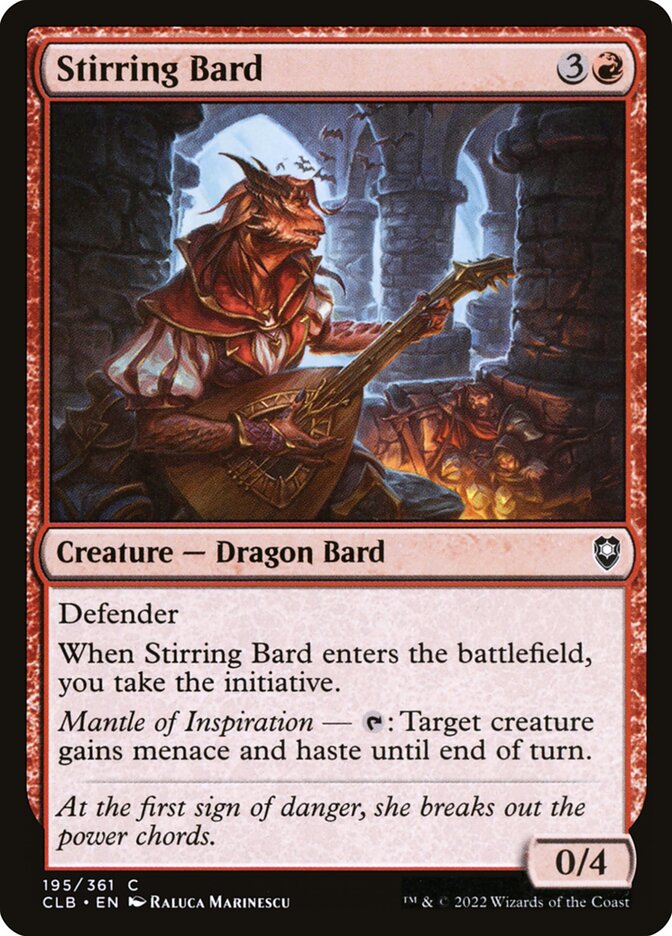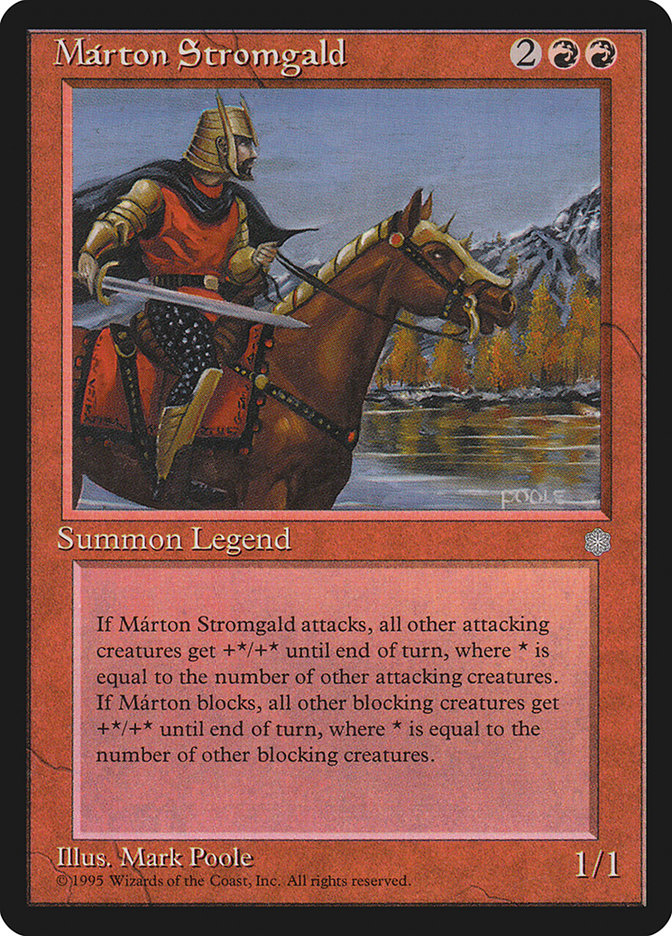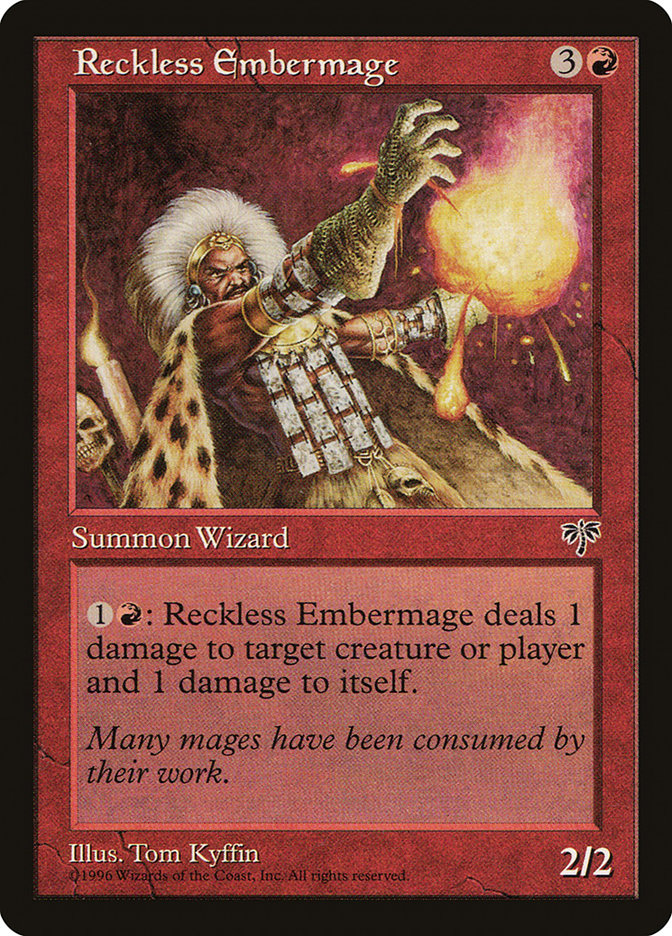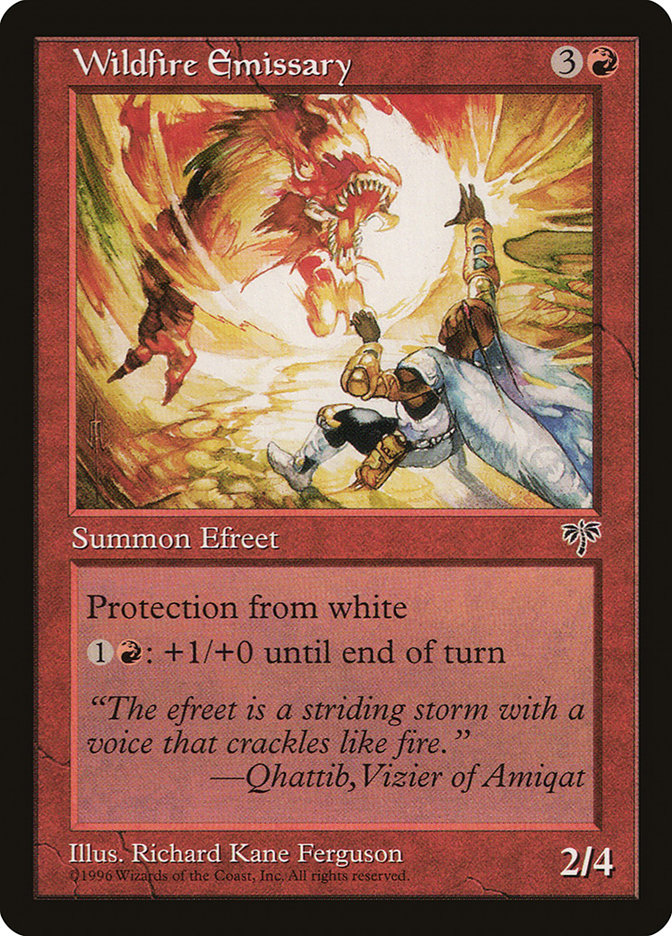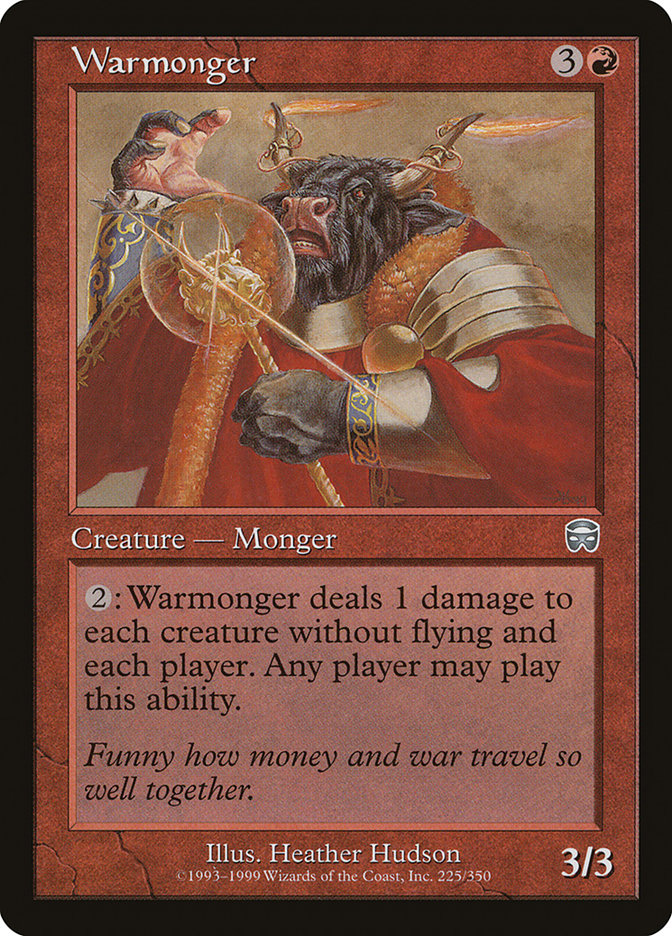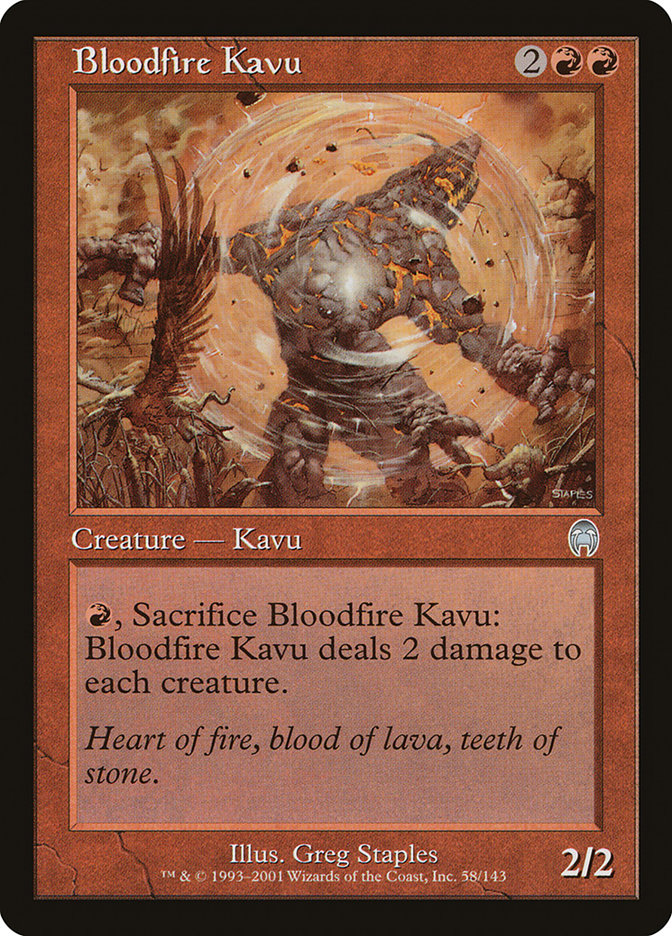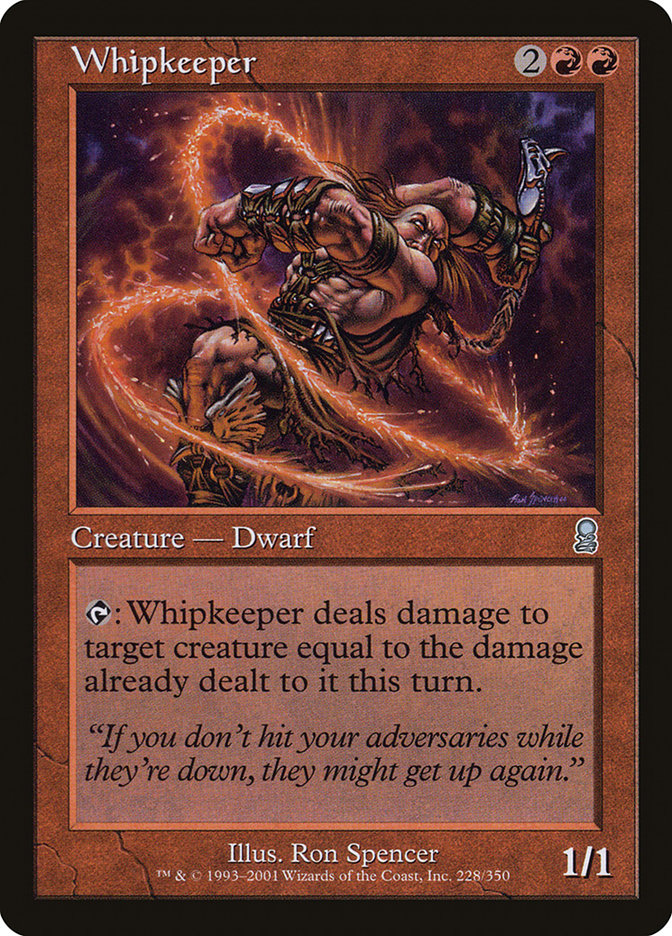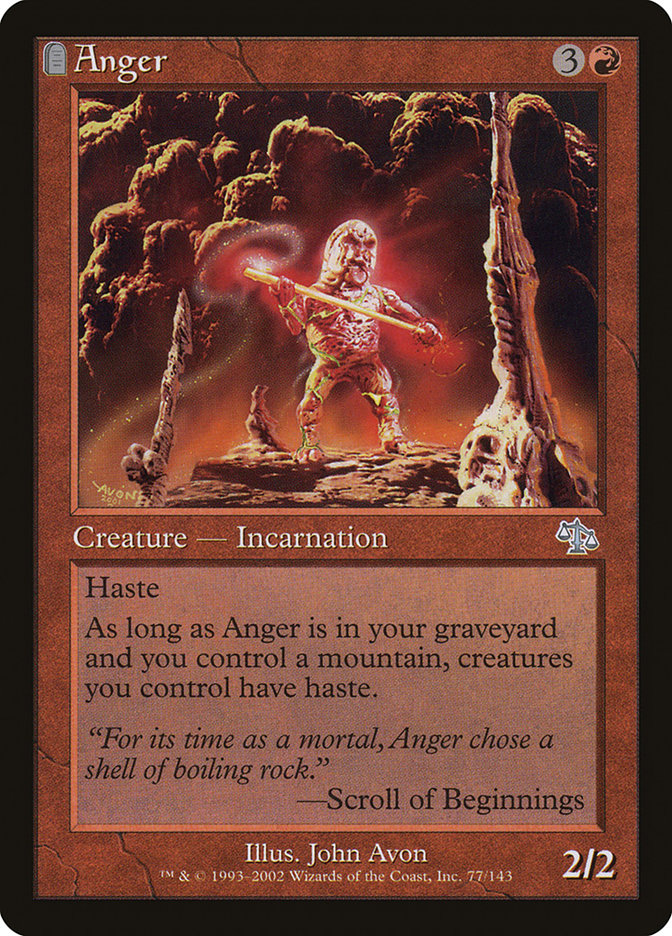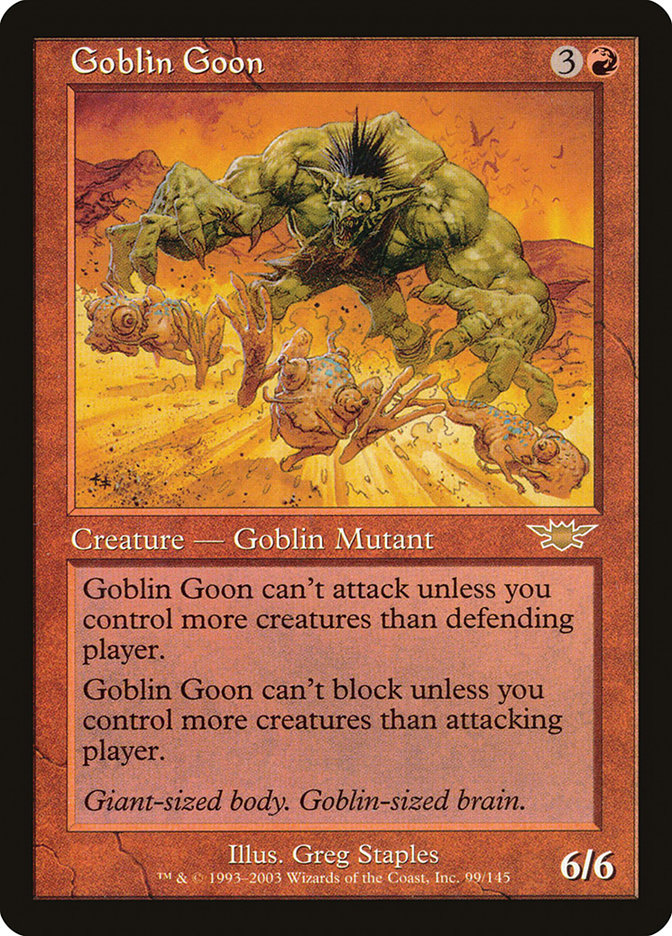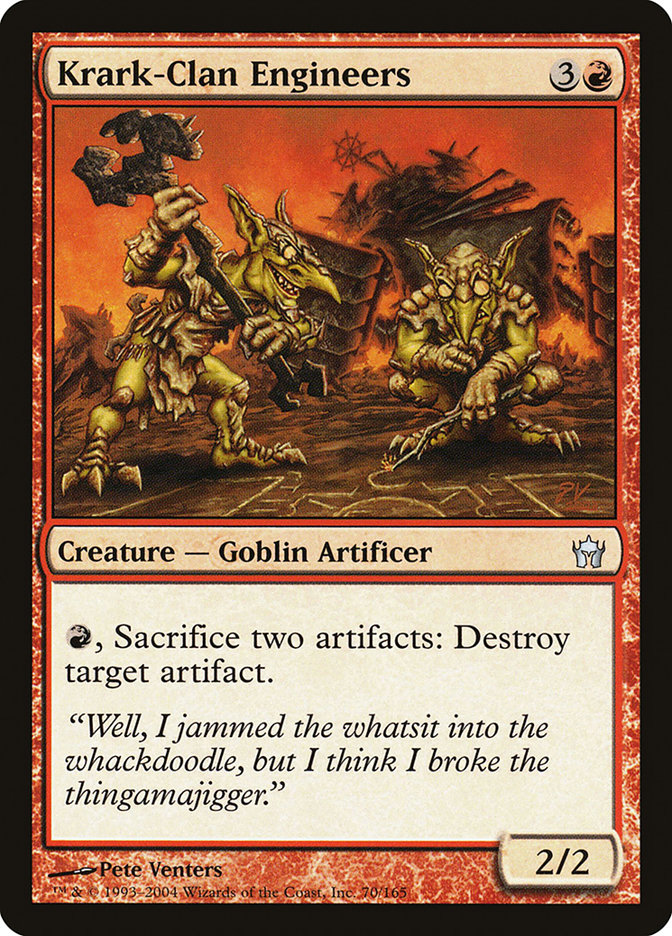Stirring Bard MTG Card
| Mana cost | |
| Converted mana cost | 4 |
| Rarity | Common |
| Type | Creature — Dragon Bard |
| Abilities | Defender,Mantle of Inspiration |
| Released | 2022-06-10 |
| Set symbol | |
| Set name | Commander Legends: Battle for Baldur's Gate |
| Set code | CLB |
| Power | 0 |
| Toughness | 4 |
| Number | 195 |
| Frame | 2015 |
| Layout | Normal |
| Border | Black |
| Illustred by | Raluca Marinescu |
Text of card
Defender When Stirring Bard enters the battlefield, you take the initiative. Mantle of Inspiration — : Target creature gains menace and haste until end of turn.
At the first sign of danger, she breaks out the power chords.
Cards like Stirring Bard
Stirring Bard is a compelling addition to the Paladin class of creatures in Magic: The Gathering. It stacks up well against alternatives such as Gallant Cavalry which also generates a significant presence on the battlefield. Yet, Stirring Bard distinctively comes with an adventure mechanic, giving added utility and sequencing benefits. Gallant Cavalry lacks this touch, and does not provide the bonus of drawing a card upfront.
Next in line, is the inspiring veteran. It’s also a fellow Knight similar to Bard but comes with less mana cost for an added +1/+1 to knights you control bonus. However, it’s one less toughness than Bard makes it susceptible to removals.
The last counterpart worth mentioning is Skyknight Vanguard. Although it flourishes in generating tokens, it sacrifices toughness. Unlike Stirring Bard, it doesn’t have the benefit of an adventure mechanic or being a part of the Knight class, reducing its synergy in a Knight centric deck.
To sum it up, by evaluating value and comparing to the likely alternatives, Stirring Bard performs exceptionally well as a member of the Paladin class in MTG, due to its unique benefits and subtle trade-offs.
Cards similar to Stirring Bard by color, type and mana cost
Card Pros
Card Advantage: Stirring Bard clears the battlefield of clutter, giving you the withdrawal victory. The Bard’s ability lets you take an artifact or creature card from your graveyard, further extending your command in the game. This means that every time Stirring Bard is in play, you gain additional sequences, becoming uncatchable by your opponents.
Resource Acceleration: The tune of Stirring Bard has zesty beats that stir awake your treasures. This unique ability of the card helps in speeding up your game. It encourages the production of Treasure tokens which accelerate your mana resources, and can be instrumental in taking a decisive lead in the game.
Instant Speed: Those who underestimate the power of a bard’s melody are often left behind in its enchantment. Stirring Bard operates at instant speed, presenting opportunities to use it any time, making it a versatile card. This leaves room for a solid, strategic play, enabling you to activate its ability when best suited during your game.
Card Cons
Discard Requirement: Animated by whimsy, Stirring Bard bears a setback – its requirement of discarding a treasure token. During crucial tunnel vision game phases, this card might tip your hand balance and shackle your aggro particularly if you’re low on resources.
Specific Mana Cost: One cannot overlook the specific mana cost constraint of Stirring Bard. The rigidity of the cost which includes a specific green mana may limit its incorporation to certain deck themes, modifying its versatility and broad use.
Comparatively High Mana Cost: The relatively high cost of casting Stirring Bard puts it at a disadvantage. When comparing it to other cards with a similar function, but a lower mana cost, it may position itself less favorably. Essentially, at four mana, there may be sundry options that guarantee better efficiency to not only draw cards but also provide improved resource generation.
Reasons to Include Stirring Bard in Your Collection
Versatility: Stirring Bard is a versatile card that meshes well with various deck types. This adventurer card allows you a choice of action, whether it be the bard itself with its ability to untap other creatures, or the adventure spell, Reviving Melody, which lets you retrieve a card from your graveyard.
Combo Potential: Stirring Bard holds great combo potential. With its ability to untap another target creature after an attack, it can be used to trigger yet more abilities or strengthen strategies that take advantage of tapping and untapping mechanics within the game.
Meta-Relevance: Given the meta trends towards ramp and recursion strategies, Stirring Bard fits quite naturally. Its part in mitigating creature exhaustion can provide significant advantages against control strategies, and its adventure spell contributes to any deck that employs the graveyard as a resource.
How to beat
Stirring Bard, a unique MTG card in the realm of creature-based magic, requires strategic play to overcome. Its Adventure component, Serenade, when resolved, will grant your opponent permission to bring encountering creature from the adventure zone directly into play. Thus, it’s crucial to formulate a plan before Stirring Bard hits the battlefield because once it’s in play, your opponent’s creatures can start appearing instantly.
One best practice is to keep instant-speed removal or counter-magic handy to disrupt the Serenade instantly or remove Stirring Bard before your opponent can take full advantage of the card’s potential. Removal cards like, “Heartless Act” or “Murderous Rider” are effective in mitigating the risks Stirring Bard poses. Likewise, counter cards like “Mystical Dispute” or “Drown in the Loch” can be extremely resourceful in this context.
Matching Stirring Bard’s tempo can prove to be a formidable challenge. However, it can be overcome with effective strategies and well-thought-out gameplay. Not forgetting the value of instant-speed removal or counters, which proves stronger than ever against Stirring Bard. Without a doubt, mastery over manoeuvring around Stirring Bard’s mechanics greatly enhances your gaming advantage in MTG.
BurnMana Recommendations
The battlefield of MTG is ever-evolving, and Stirring Bard is a noteworthy contender that has sparked the interest of many. If you’re thriving on strategy and looking for a significant edge in gameplay, understanding the finesse and limitations of Stirring Bard is key. To truly capitalize on your MTG experience, deeper insights into cards like Stirring Bard can turn the tides in your favor. Now that you’re familiar with the card’s strengths and weaknesses, don’t stop here. Keep enriching your knowledge and deck capabilities with us. Discover more strategies and master the art of MTG with BurnMana. Elevate your deck, command the battlefield, and join the ranks of MTG connoisseurs today.
Where to buy
If you're looking to purchase Stirring Bard MTG card by a specific set like Commander Legends: Battle for Baldur's Gate, there are several reliable options to consider. One of the primary sources is your local game store, where you can often find booster packs, individual cards, and preconstructed decks from current and some past sets. They often offer the added benefit of a community where you can trade with other players.
For a broader inventory, particularly of older sets, online marketplaces like TCGPlayer, Card Kingdom and Card Market offer extensive selections and allow you to search for cards from specific sets. Larger e-commerce platforms like eBay and Amazon also have listings from various sellers, which can be a good place to look for sealed product and rare finds.
Additionally, Magic’s official site often has a store locator and retailer lists for finding Wizards of the Coast licensed products. Remember to check for authenticity and the condition of the cards when purchasing, especially from individual sellers on larger marketplaces.
Below is a list of some store websites where you can buy the Stirring Bard and other MTG cards:
 BUY NOW
BUY NOW BurnMana is an official partner of TCGPlayer
- eBay
- Card Kingdom
- Card Market
- Star City Games
- CoolStuffInc
- MTG Mint Card
- Hareruya
- Troll and Toad
- ABU Games
- Card Hoarder Magic Online
- MTGO Traders Magic Online
See MTG Products
Legalities
Magic the Gathering formats where Stirring Bard has restrictions
| Format | Legality |
|---|---|
| Commander | Legal |
| Legacy | Legal |
| Paupercommander | Legal |
| Oathbreaker | Legal |
| Pauper | Banned |
| Vintage | Legal |
| Duel | Legal |
Rules and information
The reference guide for Magic: The Gathering Stirring Bard card rulings provides official rulings, any errata issued, as well as a record of all the functional modifications that have occurred.
| Date | Text |
|---|---|
| 2022-06-10 | A player who currently has the initiative may take the initiative again. This causes that player to venture into Undercity again, but does not cause them to have multiple initiative designations. |
| 2022-06-10 | If the player with the initiative leaves the game, the active player takes the initiative at the same time that player leaves the game. If the active player is leaving the game or if there is no active player, the next player in turn order takes the initiative. |
| 2022-06-10 | If you aren’t in a dungeon when instructed to venture into Undercity, you will put Undercity into the command zone and move your venture marker to Secret Entrance (the first room). |
| 2022-06-10 | If you’re already in a dungeon when instructed to venture into Undercity, you move to the next room of that dungeon. If you are already in the last room, you will complete that dungeon and start Undercity. This is true whether you’re already in Undercity or any other dungeon. |
| 2022-06-10 | In a Two-Headed Giant game, if both players on a team deal combat damage to the player that has the initiative at the same time, the player with the initiative will choose the order of the triggered abilities. Then, as those abilities resolve, one team member takes the initiative (and ventures into Undercity) and then the other team member does the same. The last player to take the initiative keeps it until the initiative changes again. |
| 2022-06-10 | Only one player can have the initiative at a time. As one player takes the initiative, any other player that had the initiative ceases to have it. |
| 2022-06-10 | Similarly, when instructed to venture into Undercity, you can’t start a dungeon that isn’t Undercity. |
| 2022-06-10 | The initiative is a designation a player can have. A player with the initiative designation is said to “have the initiative.” The initiative carries two inherent rules. First, whenever a player takes the initiative, and at the beginning of the upkeep of the player with the initiative, that player ventures into Undercity. Second, whenever one or more creatures a player controls deal combat damage to the player who has the initiative, the first player takes the initiative. Also, some abilities will refer to having the initiative and provide other benefits. |
| 2022-06-10 | There is no initiative in a game until an effect instructs a player to take the initiative. Once a player is instructed to do this, they have the initiative until another player takes the initiative. |
| 2022-06-10 | You cannot venture into Undercity unless instructed to do so, either because you have the initiative at the beginning of your upkeep or because you take the initiative. Notably, if you aren’t in a dungeon and an effect instructs you to venture into the dungeon (not venture into Undercity), you can’t start Undercity. |
